Nexion Reflections and textures
A series of creative installations to enhance and explain Nexion tiles’ uniqueness
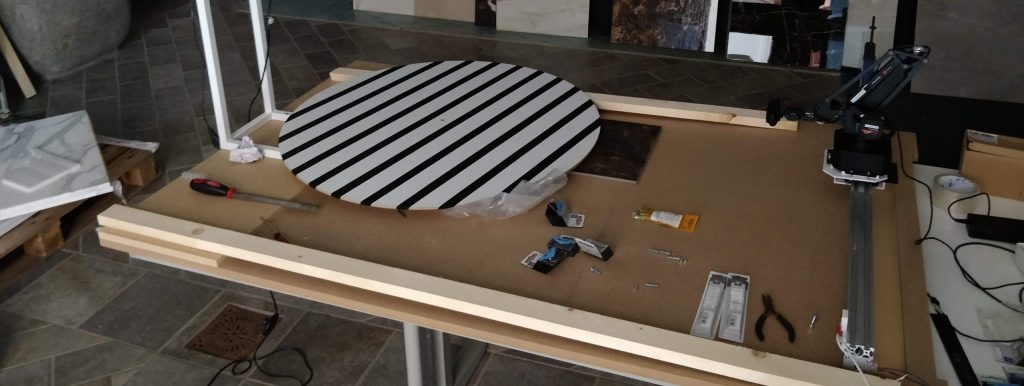
Customer:
Nexion Tiles
Challenge:
Nexion Tiles are made in India with Italian know-how and industrial machinery. Compared to competition, the tiles offer a surface quality and planarity that has few equals. Showing and proofing these unique properties to customers during trade shows and events was the assignment
Year:
2017-2018
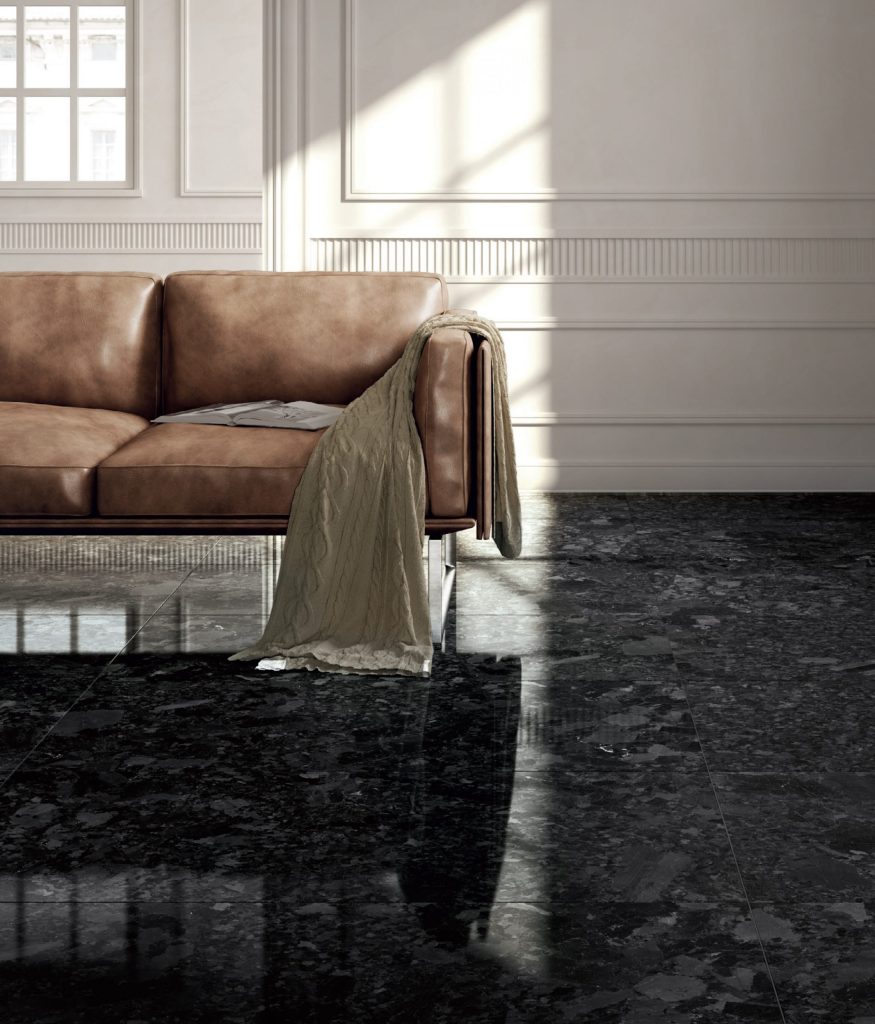
Truthful to renders
When you ask an architect to create a project for a home or an office, renders are part of the activity. All the relevant tile suppliers offer libraries of textures that allow the architect to create realistic renders of the environments. Sizes and textures are part of the available data, but every time a floor is made of tiles that have flat, shiny and marble-like textures, the render offers these “still water” reflections of the surrounding. This usually persuades the customer to accept these flooring proposals thanks to the very cool effect. Sadly, the reality is not a computer render and almost all the standard tiles are not flat as they should be and the real reflections of the environment are distorted, wavy and sometimes even disturbing.
Nexion Tiles are by design flat and really offer that “render quality” mirror-like flat reflection, so the assignment was to develop installations and technical solutions that show the customer how the tiles perform with reflections.
The customer hired me for two shows in a row, Cersaie 2017 and 2018, with an extra installation at Nexion’s main event in Jaipur (India).
Reflections on dark marble tiles
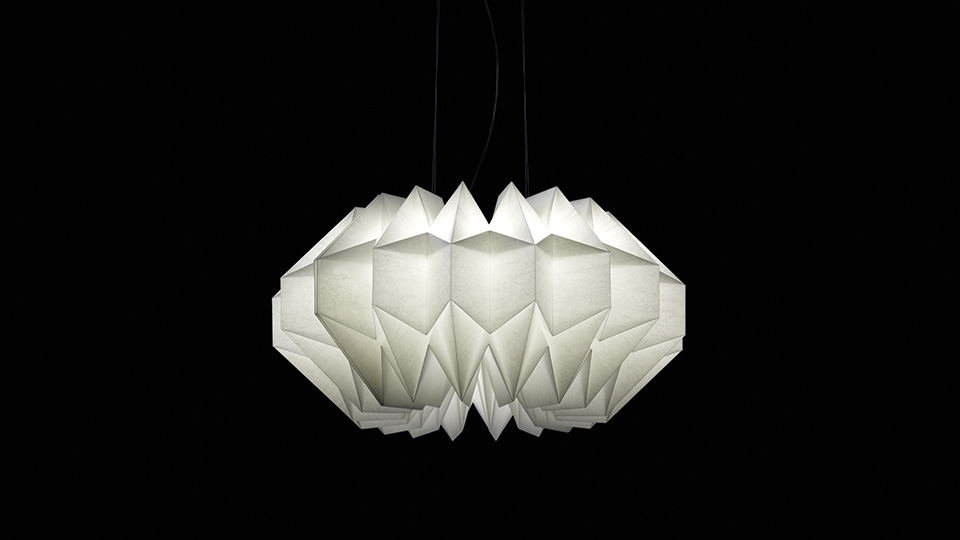
The first installation was focusing on the newly introduced 240×120 cm tiles. We designed three environments that challenged the viewer’s perception of space and reflections.
Each space was dark inside, with a dark marble tile as the side facing the user. The first space had a complex lamp hanging over the head of the visitor. It was the “IN-EI – ISSEY MIYAKE FOR ARTEMIDE” that with its subtle shadows allowed the visitor to focus on the exact shapes. Any distortion in the reflection would show immediately making the shape unpleasant.
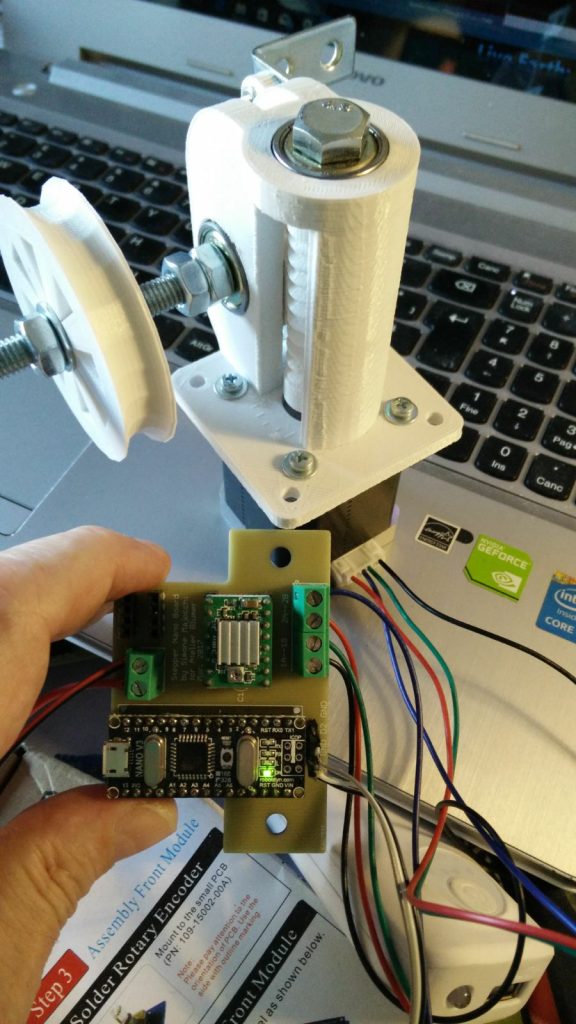
The second space had the same reflecting tile and a LED Panel with horizontal masking stripes that was slowly moving over the head of the visitor. In this case the stripes reflected were maintaining their shape as proof of the perfect planarity of the surface.
The movement of the panel was managed by a 3D printed mechanism based on an Arduino board and the same PCB developed for the Seven Mechanical Architectures exhibition in Mendrisio (Swiss). This allowed full control over the speed and range of the oscillation.
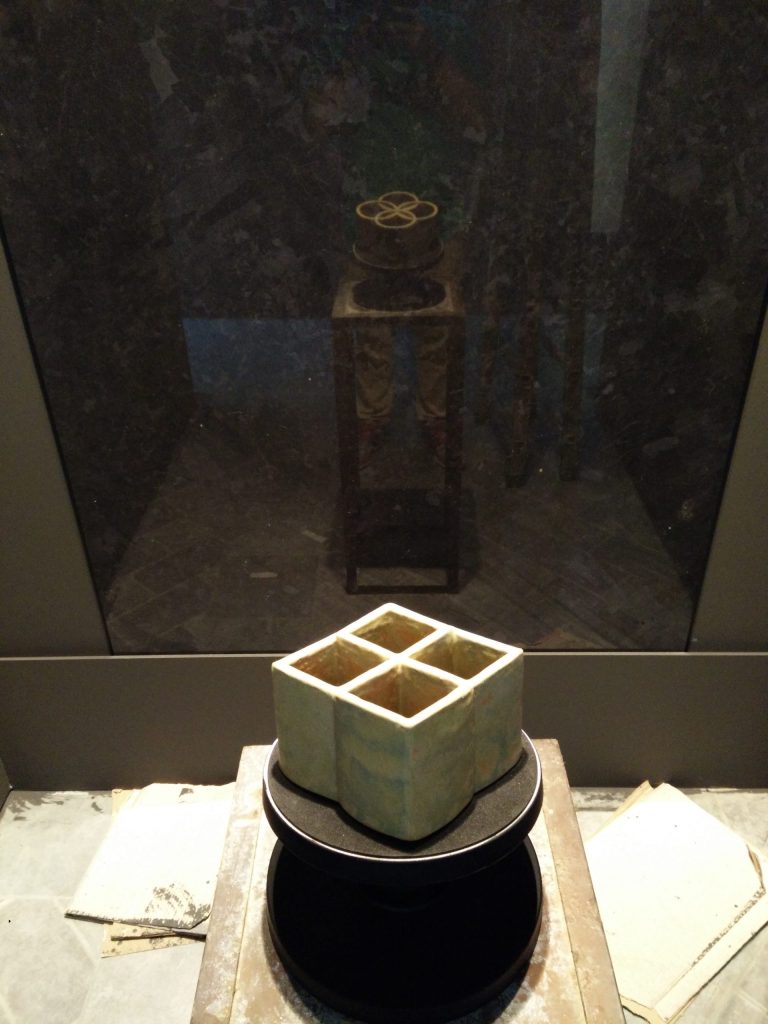
The last installation added a “wow factor” to make the experience more memorable. Using a clay 3D printer and the artistry of Francesco Pacelli, we made a fairly big ceramic vase – a material similar to the one used for the tiles – that interpreted the optical illusions developed by Kokichi Sugihara. The vase was on a turning plinth so that the visitor was able to rotate it while looking at its reflection in the tile.
The overall experience reported by the visitors was about what they saw in the reflections, almost forgetting that they saw something reflected by a TILE and not a mirror.
The requirement of showing the “render-like” performance of the tiles was fully met and the visitors were impressed by what they experienced entering these dark spaces with these strange objects to look at.
Moving the lines
For the next trade show, I decided to bring in more technology and make comparisons between surfaces easy to experience.
When you evaluate the quality of a reflection over a surface, you need to get down to a certain angle, quite low. I could have created a bench with some patterns and some tiles, but having it at the right height to offer the proper reflection effect wasn’t so easy to achieve: people have different heights and making it self-adjusting or somehow moving up and down would make the experience available to one viewer at a time.
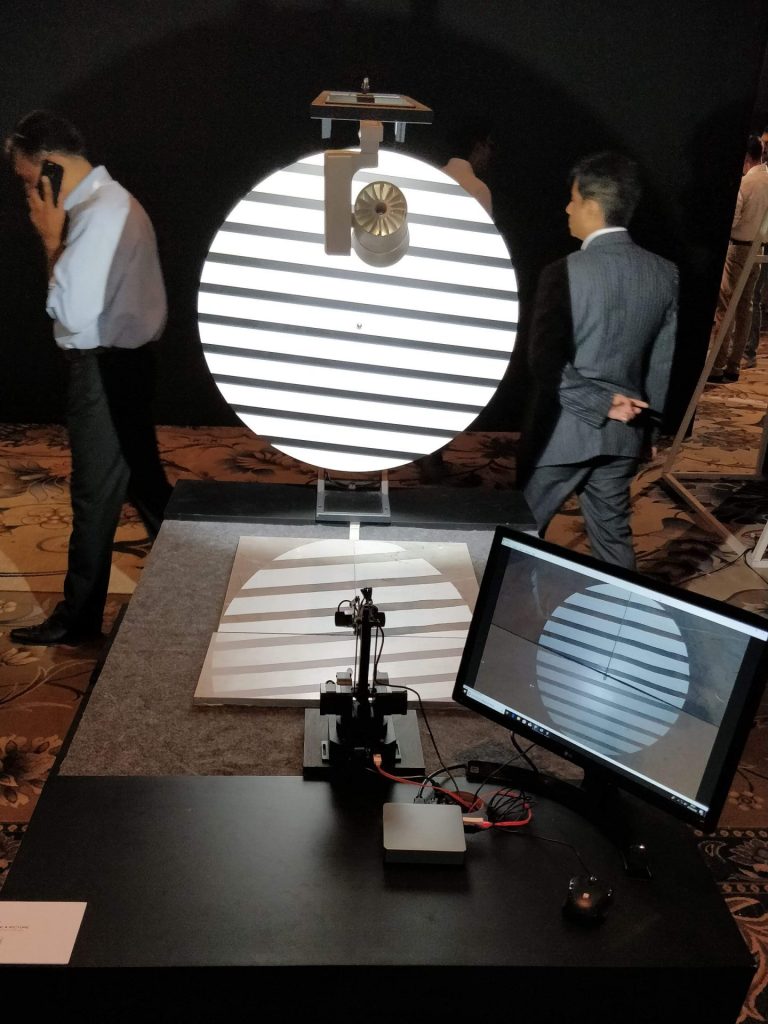
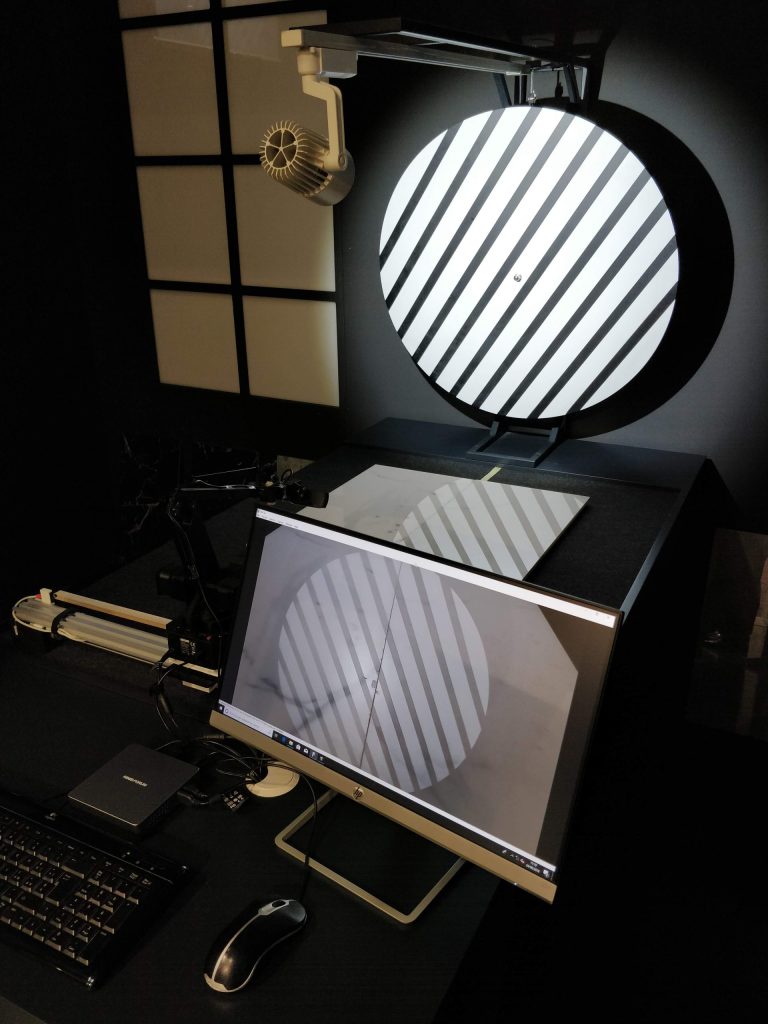
The image viewed in the monitor allows to understand how the flatness of the tile surface affects the reflected geometries.
I adopted a high-resolution webcam placed on a robotic arm, controlled by an Arduino, plus a miniPC to manage the webcam display. Then I prepared a rotating disk with the pattern to reflect and all the parts were assembled as a bench easy to transport and assemble. This design included 3D printed parts.
The way it worked was easy to understand and the reflection picked up by the cam and shown on a big monitor allowed many visitors to understand how Nexion Tiles were flat compared to the competition. This setup also allowed us to show how tiles offered a crisper image than real marble.
The solution was both eye-catching and effective.
Every visitor that tried this bench learned how to look at the tiles to see if they were flat or wavy and many were thankful for the educational content of the experience.
The same installation was reassembled for the Nexion main event in Jaipur with the Asian distribution partners.
